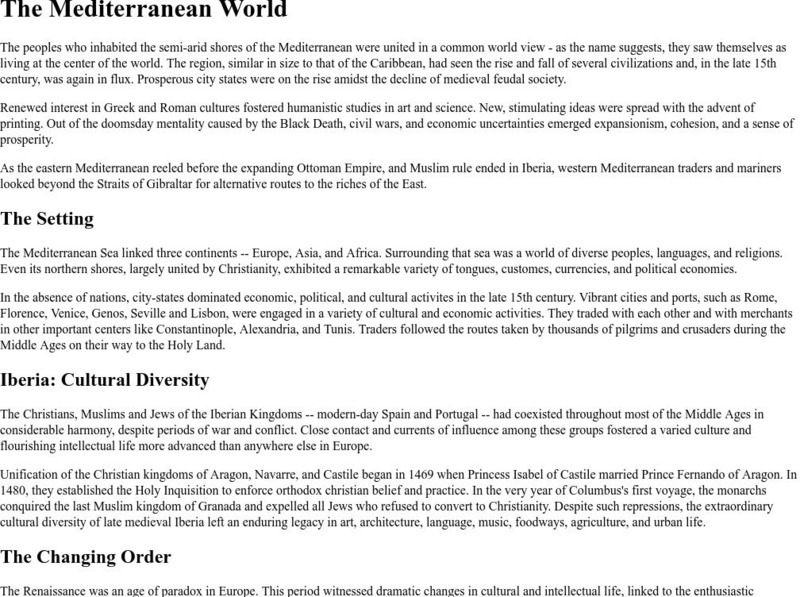Curated OER
Renaissance Man Comparison Poster
Students watch a PBS video entitled Suleiman to help them identify characteristics associated with Renaissance notables. After watching the video, individually or in small groups, the students will research a notable Renaissance figure...
Curated OER
Nureyev: After Petipa
Students examine dance and choreography in Russian history. In this Russian history lesson, students discover details about Russian ballet and the work of Marius Petipa as they conduct independent research and present their findings to...
Curated OER
'European Exploration, Conquest, and Trade
Fifth graders examine the motives, progress and results of the European exploration and conquest of Asia, Africa and the West Indies from the 15th to the 17th centuries. They use maps to trace spice routes and research the role of spices...
Curated OER
The Queen of Sheba
Learners discuss various versions of the myth of The Queen of Sheba and the basic characteristics of myths. They research how different cultures interpret the story and include it in their religious beliefs. They create projects about...
Other
Aligarh Muslim University (India): Active and Passive Continental Margins
Explains what active and passive continental margins are and where they can be found. Includes a world map showing their locations.
ibiblio
Ibiblio: The Mediterranean World
This website contains information about the people using the Mediterranean during the Renaissance. Mentions cultural diversity, humanism, economics and port cities. Includes the setting, cultural diversity, and changing order of the...
University of Calgary
The Islamic World to 1600: The Safavid Empire
This page comes from the University of Calgary and thoroughly describes the Safavid Empire as well as provides a clickable map detailing the areas included within their empire.
ClassFlow
Class Flow: National Geographic Survey
[Free Registration/Login Required] How much do you know about the world around us? Questions provided by National Geographic Survey. http://www.nationalgeographic.com/roper2006/findings.html







